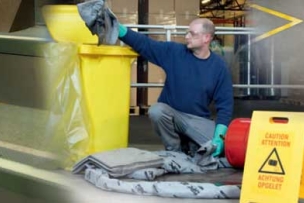Do you focus too much on the symptoms and outcomes of risk, such as injury data and total incident reduction? It might be time to go up a level or two into operational process. You could find important connections to business value which can elevate safety culture and help attain full executive buy-in.
Within a minute of talking to Peter Susca, founder of OpX Safety, he will tell you that safety is a leading indicator of business health. It’s a pretty bold statement, but one he is intent on safety professionals really understanding—so that they can make a major cultural impact for their company regardless of the industry.
We interviewed Susca before his presentation at the American Society of Safety Professionals “Safety 2019” conference. “It's Bigger Than Safety: Integrating OSH into the Business” is intended to completely shift the mindset of safety professionals who may be narrowly focused on outcomes rather than the root cause of risk.
“Injuries are the last things you want to measure, literally,” Susca says. “I talk to companies and I ask them, ‘What’s the last thing you want to have happen?’ and invariably the answer is, ‘We don’t want anyone to injure anybody.’ Ok. So why are we measuring injuries?”
Keep track of all this year's ASSP event coverage on our MSC at Safety 2019 page.
Safety: A Laser Focus on Outcomes Misses the Root Cause
During his presentation, Susca labels the OHS profession “Safety Island” and depicts the mainland as being the core business or financial engine. Safety, in his view, is viewed as a risk to financial health by the business—and mostly because it’s a cost center and not a value or revenue center.
But there is a nexus—and it’s squarely within operational process—and its direct ties to business health. Susca spent 20 years in the fire service working with hazardous materials training, the Fire Academy, and ended up at Hamilton Standard, and United Technologies, as a safety engineer and working on corporate safety management systems.
“You got to move upstream,” Susca says. “What creates injuries? Whatever creates risk is what creates outcomes, so to create a relationship between culture and outcomes, and everything in between, you need to connect the dots.”
What he means by operational process is the way manufacturers, energy companies and utilities go about doing work. How are operations tied to business health? Susca gives an example of consulting at an iron ore where he witnessed two maintenance workers grinding down rollers—and one guy’s holding the roller on a metal table while the other guy’s grinding the end with an angle grinder—with little use of PPE or safeguarding.
It didn’t look right. Rather than communicate safety protocol, Susca chose to ask why they were grinding rollers. The answer: They didn’t fit in their current process. Purchasing was buying the wrong items—but these guys think they are heroes for trying to solve the problem.
“It might be the way we go about hiring people, the way we go about maintaining equipment, or the way we go about educating managers or selecting supervisors—or even making a part or a product or delivering a service,” Susca says. “We would have never found out the real issue if we just said to these guys, ‘Hey, you need to wear some gloves and make sure you have a job hazard analysis,’ right?”
In his view, a safety-only perspective would have resulted in a Band-Aid fix such as a hazard sign instructing glove use, but the problem and the cause would not have been addressed. And the risk would still exist. Further investigation discovered many issues with purchasing across departments.
“What I have found in my experience is that there is a correlation between process risk, operational risk and safety,” Susca says. “A focus on the business risk within operations will help the business health—and the culture.”





Talk to Us!
Leave a reply
Your email address will not be published. Required fields are marked *